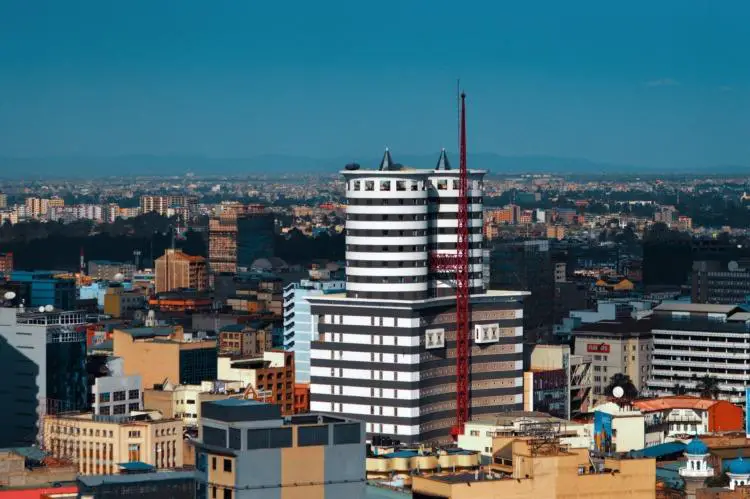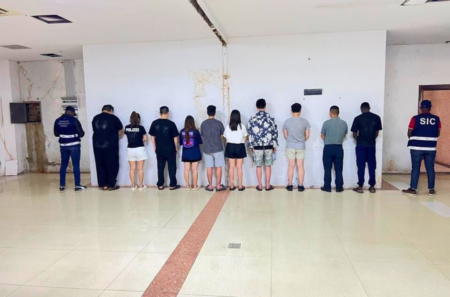Business activity in Kenya in November expanded at the fastest rate in 10 months following the lifting of the 10 pm to 4 am curfew.
This is according to a survey conducted by Stanbic Bank which reveals that domestic demand increased rapidly in response to the lifting of the curfew, with the main beneficiaries being firms in services, trade and construction.
As such, firms enjoyed a sharp increase in demand through the lifting of curfew measures.
The Purchasing Managers’ Index also noted that there was a solid and accelerated upturn in output levels across the Kenyan private sector economy in November.
Respondents of the survey said that the lifting of the national curfew had led to increased economic activity and customer demand.
However, some firms continued to report cash flow problems.
The survey also noted that the pace of output growth was the fastest seen since May, driven by expansions in the construction, wholesale and retail and services sectors.
As such, Kenya’s headline PMI was 53.0 in November, up from 51.4 in October.
The figure was the highest in ten months, signalling a solid upturn in the health of the private sector economy.
Readings above 50.0 signal an improvement in business conditions on the previous month, while readings below 50.0 show a deterioration.
During the month, new business at Kenyan companies rose sharply midway through the final quarter, with the rate of growth accelerating for a second straight month to the quickest since May.
Firms reporting higher sales commented on an increase in customer numbers that were often linked to the removal of curfew hours.
In line with output, new orders rose among construction, wholesale and retail and services firms, but were largely unchanged in agriculture and manufacturing.
Study Reveals What Sustained Kenya’s Economy in 2020
Strong demand for Kenyan exports was recorded again in November, with firms particularly highlighting a rise in orders from European clients.
Despite ticking down for the first time in four months, the rate of new export order growth was among the sharpest seen in the series history.
Increased output and hiring enabled firms to manage their workloads better during November.
Backlogs of work decreased slightly, bringing to an end a five-month sequence of expansion that was the longest recorded since early-2020.
That said, there were still some mentions of capacity pressures linked to higher new orders.
The seasonally adjusted Employment Index pointed to a solid expansion in job numbers during November, and the seventh in as many months.
Moreover, the rate of workforce expansion was the quickest seen in exactly two years, which respondents often attributed to higher workloads.
Four of the five sectors covered by the survey saw an increase in employment, the exception being manufacturing.
For the fourth month running, the rate of input purchasing growth at Kenyan companies accelerated in November, with the latest upturn the sharpest since the beginning of the year.
Firms that recorded higher purchases largely cited a rise in new orders. Notably, the overall increase in input buying climbed above the series long-run trend.
While the latest data signalled an overall upturn in supplier performance during November, the rate of improvement slipped for a second month running to the weakest in one-and-a-half years.
Faster deliveries were often reported in places where suppliers faced strong competition.
However, difficulties sourcing inputs due to a lack of supply led to slowdowns elsewhere.
Only the services and construction sectors saw a reduction in average lead times.
After running broadly flat over the past few months, the seasonally adjusted Stocks of Purchases Index ticked up in November to signal a stronger rise in inventories at Kenyan firms.
The rate of growth was also the fastest seen since December 2020.
With the surge in new orders, firms often reported efforts to stockpile inputs amid expectations that demand will continue to improve.
Input prices across the Kenyan private sector economy rose in November, as firms continued to see a marked uplift in expenses related to purchasing items.
Fuel bills were also quoted as being higher, while staff costs rose to a lesser extent.
Whilst sharp overall, the rate of input cost inflation eased for the first time since August.

Inflationary pressures from higher purchase prices remained widespread midway through the fourth quarter.
Around 16% of businesses saw purchasing costs rise over the month, compared to 1% that registered a decline.
Anecdotal evidence indicated that a fall in the exchange rate against the US dollar and recent tax rises were often behind an uptick in import prices.
Some firms noted that supply issues also added to inflationary pressures.
As has been the case since May, the seasonally adjusted Staff Costs Index pointed to a rise in salaries at Kenyan companies during November.
The rate of wage inflation was only fractional, however, and the slowest recorded in this sequence. Firms noted that pay increases were often a result of strike action and higher living costs.
Businesses largely passed on a rise in input costs to their customers in November, as the latest data indicated a strong mark-up of average selling charges.
Furthermore, the pace of charge inflation accelerated for the third month running to the highest since the start of the year and was above the series trend.
Notably, all five monitored sectors posted a rise in output prices.
Businesses largely passed on a rise in input costs to their customers in November, as the latest data indicated a strong mark-up of average selling charges.
Kenyans to have more money as economy rebounds to grow by 5 per cent in 2022
Furthermore, the pace of charge inflation accelerated for the third month running to the highest since the start of the year and was above the series trend.
Notably, all five monitored sectors posted a rise in output prices.











